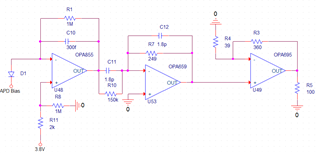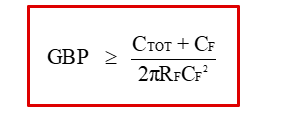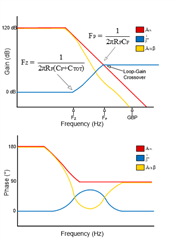Other Parts Discussed in Thread: OPA277, OPA858, OPA657
Tool/software:
I'm currently testing a C-TIA circuit using the OPA855.
I'm experiencing a DC bias issue in my test setup. The non-inverting input of the OPA855 has a bias of 3.8V, while the inverting input has a bias of 3.2V.
I believe this 0.6V difference in input bias is causing the OPA855 to saturate. However, the OPA855's output has a DC bias level of 3.4V.
Can anyone explain why this situation is occurring and provide guidance on how to achieve the desired 3.8V output DC bias level?
I'm using an OPA277 to generate a 3.8V DC bias voltage in my circuit.








